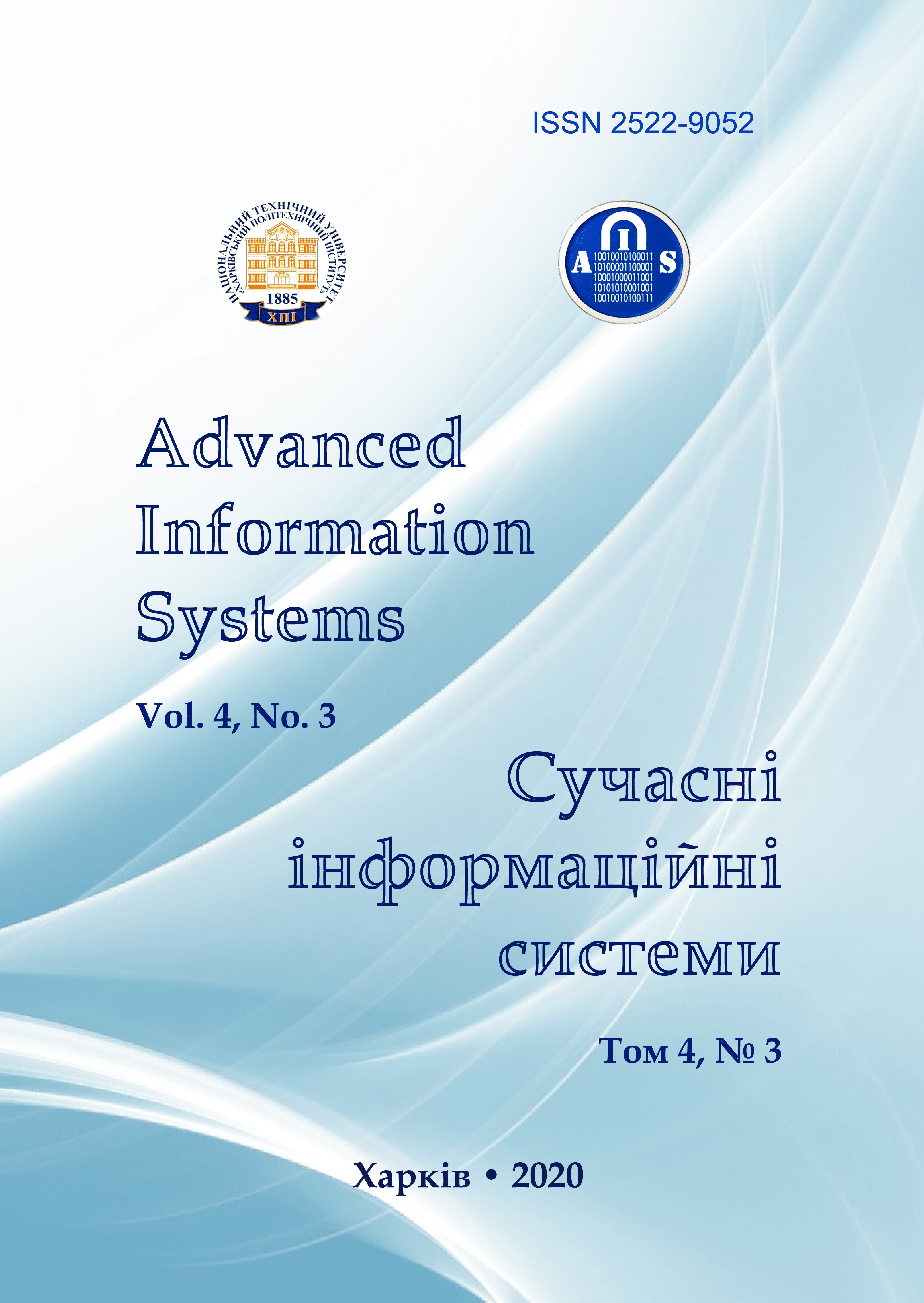TESTING PROCESS FOR PENETRATION INTO COMPUTER SYSTEMS MATHEMATICAL MODEL MODIFICATION
Main Article Content
Abstract
Article Details
References
Minaev, V.A., Korolev, I.D., Mazin, A.V. and Konovalenko S.A. (2018), “Model for identifying vulnerabilities in unstable network interactions with an automated system”, Electronics, Radio industry: Central Research Institute of Economics, Control Systems and Information, No. 2, pp: 48-57.
Mikhalov, O.I., Demchenko, V.I. and Korsun D.A. (2007), “Assessment of the throughput capacity of GERT-fences with characteristic functions”, Adaptive systems for automatic control, No. 11, pp. 25-35.
Semenov S. (2012), “Methods of mathematical modeling of secure ITS based on a multilayer GERT network”, Bulletin of the National Technical University "Kharkov Polytechnic Institute". Series: Informatics and Modeling, NTU "KhPI", Kharkiv, No. 62 (968), pp. 185-193.
Atoum, Issa and Ahmed, Otoom (2017), “A Classification Scheme for Cybersecurity Models”, International Journal of Security and Its Application, Vol.11, No.1, pp.109-120.
Dingyu, Yan (2001), A Systems Thinking for Cybersecurity Modeling, arXiv, arXiv:2001.05734.
Engebretson, Patrick (2011), The basics of hacking and penetration testing: ethical hacking and penetration testing made easy, Elsevier, 159 p.
Felderer, Michael, Matthias, Büchler, Martin, Johns, Achim D., Brucker, Ruth, Breu and Alexander, Pretschner (2016), “Security Testing: A Survey”, Advances in Computers, Vol. 101, pp. 1-51.
Garg, Vishal (2020), Approaches, tools and techniques for security testing, available at:
https://www.3pillarglobal.com/insights/approaches-tools-techniques-for-security-testing
Goela Jai, Narayan and Mehtreb, B.M. (2015), “Vulnerability Assessment & Penetration Testing as a Cyber Defence Technology”, 3rd International Conference on Recent Trends in Computing 2015 (ICRTC-2015), pp. 710-715.
(2020), ISO/IEC 27001 INFORMATION SECURITY MANAGEMENT, available at: https://www.iso.org/isoiec-27001-information-security.html
Kim, Peter (2018), The Hacker Playbook 2: Practical Guide To Penetration Testing, Secure Planet LLC, 337 p.
(2020), Penetration Testing Methodologies - OWASP Foundation, available at: https://owasp.org/www-project-web-security-testing-guide/latest/3-The_OWASP_Testing_Framework/1-Penetration_Testing_Methodologies
Semenov, S., Sira, O., Kuchuk, N. (2018), “Development of graphicanalytical models for the software security testing algorithm”, Eastern-European Journal of Enterprise Technologies, Vol. 2, No. 4 (92), pp. 39-46, DOI: https://doi.org/10.15587/1729-4061.2018.127210
Serhii, Semenov, Viacheslav, Davydov, Oksana, Lipchanska and Maksym, Lipchanskyi (2020), “Development of unified mathematical model of programming modules obfuscation process based on graphic evaluation and review method”, Eastern-european journal of enterprise technologies, Vol. 3/2(105), pp. 6-16.
Sommestad, Teodor, Mathias, Ekstedt and Hannes, Holm (2013), “The Cyber Security Modeling Language: A Tool for Assessing the Vulnerability of Enterprise System Architectures”, IEEE Systems Journal, vol. 7, no. 3, pp. 363-373, DOI: https://doi.org/10.1109/JSYST.2012.2221853.
